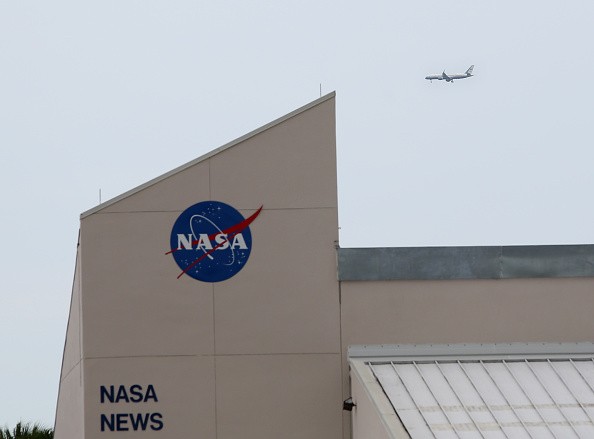NASA just released a video of sci-fi-looking space exploration concepts, which they say detail what they're looking forward to in the future.

In a report by CNET, the video, called "Visions Of The Future," is the result of fan-made posters depicting travel to other planets.
The artworks are posted on the NASA Jet Propulsion Laboratory website, if you're interested to look at them.
As for the video, see it for yourself:
Uploaded on the NASA Goddard YouTube channel, the video shows space exploration destinations ranging from relatively close and familiar ones (Mars and the Moon) to exoplanets several light years away, such as Kepler 16b and GJ 357 d.
NASA Goddard even uploaded a few behind-the-scenes photos on Twitter of how the video was made, revealing the obvious use of green screens:
And speaking of inspiration, this video was inspired by the "Visions of the Future" travel poster series created by @NASAJPL.
— NASA Goddard (@NASAGoddard) October 19, 2021
You can watch this behind-the-scenes look at the making of the video version, and you can grab the posters at https://t.co/7vMqQWjZU9. pic.twitter.com/g9jNShf0dB
As per the original CNET report, the video is a new artistic approximation of distant worlds that show human explorers on them for the first time.
People are often left out of the equation when exploring these planets and moons, but as NASA Goddard stated: "At least as important as the spacefaring rockets and satellites is the explorer and the inspiration to make the journey."
Read also: NASA Perseverance Discovers Mars' Jezero Crater to be a Lake, Hints to a Previously Warm Planet
Which One Of These NASA Concepts Can Come True?
A few of the real exoplanets depicted in the video have been confirmed, though they remain out of reach for current-generation space exploration technology. They're just too far.
Kepler 16b, for instance, is located 200 light years away from Earth. To put that distance into perspective, peep this: one light year is the distance that light, the fastest thing in the universe, travels in an Earth year.
To cover one light year with conventional rocket propulsion, you'll spend 37,200 years in a spaceship. To travel 200 light years, it will take you 7.4 million years. Obviously, you don't have time for that.
But perhaps with NASA's planned upgrades, the possibility of humans seeing those planets with their own eyes is getting closer to reality. The Alcubierre Drive, or a real-life warp drive, which is in the works right now, could potentially make it possible for humans to travel several light years without spending too much time.

As for things like human settlements on Mars and the Moon, a lot of things are in play already. There are many plans to settle Mars, for instance, but scientists will still have to figure out how to counteract the negative health effects of microgravity, as well as how to feasibly construct a settlement there in the first place.
Exploring The Solar System
Our very own Solar System is still chock full of mysteries to uncover. There are the enigmatic moons of Saturn and Jupiter, with Saturn's very own Titan being prominently featured in the NASA video.
So, would you be able to go kayaking on Titan in the first place? Technically, you can. But you'll be paddling through an ocean made of liquid methane and ethane, according to LabRoots.
Furthermore, Titan is cold; like below freezing cold at -279 degrees F, according to NASA. You'll need to pack a lot of layers if you want to go on a vacation there.
This article is owned by Tech Times
Written by RJ Pierce




